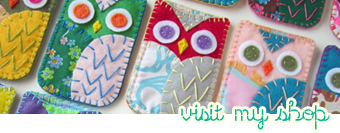
Seeding A Business
How To Be Your Own Huckster
by Susan Beal
Say you make duct tape wallets. Or hand-sewn handbags. Your friends have started requesting them at birthdays. In the street and at social functions you're flooded with compliments. After the hundredth time of being asked where you got your red corduroy A-line skirt with vintage embroidered patch pockets, it dawns on you that maybe you could sell your handiwork somewhere.
Two years ago I started sewing a lot. Some friends of mine who ran a hip boutique asked if I wanted to try selling my designs there. On a lark, one Saturday morning I brought in four skirts. By afternoon one of them had sold. It may not be what Steve Jobs felt watching people use the first Macintosh, but seeing someone wearing your art is pretty gratifying, and paying rent with the proceeds feels almost criminal.
Retail Therapy
Once you have perfected a few of your designs, try approaching stores you like around town. Call during off-hours and make an appointment with the manager or buyer. Bring a selection of your best-made pieces and a card, and don't act as though you're an imposition-you're actually saving the buyer from having to go out and scout for inventory.
If the buyer bites, you'll probably have two options: wholesale or consignment. Wholesale gets you a smaller cut-usually 50 percent of the retail price-but it's cash up front. Consignment nets you between 50 and 75 percent of the selling price, but there's no guarantee of a payout.
Attaching a price to your work can be tough. Start by tripling the cost of your materials and adding a fair compensation for your time. Store owners can be your guide; if it doesn't sell at top dollar, mark it down a few weeks later. Arrange to check in on a monthly basis to collect on sales. If you have designs in more than one shop, set your prices so there's no danger of underselling yourself. Either way, keep good records. Note how many pieces you put on sale and the price of each.
Though it's harder work, you can keep more of the proceeds by holding your own sale. Ask a coffeehouse, bar, studio, or gallery space to host you for trade or 10 percent commission. Invite other artists to participate so there's a bigger draw (and some help pulling it off). Then plug yourself shamelessly like you would a rock band-post flyers, send out press releases, blitzkrieg everyone you can think of with phone calls, email, and postcards.
EBay and Beyond
If you don't have the resources to launch a Web site right away, eBay is an easy way to test-drive online sales. Do a few keyword searches before you post something to see what's selling and for how much. Meli Hopkins, an artist from Florida, got started selling on eBay, but ended up creating her own site, melimade.com, to steer clear of the garage-sale mentality. "People expect a deal [on eBay]," she says, "and often with quality goods the price is higher than deal-shoppers are willing to pay."
Since creating her site, Hopkins has been doing a brisk business selling handmade jewelry, vintage clothes, and used DIY books through PayPal. The equivalent of online cash, PayPal is an easy, secure, and reliable way to handle transactions once you're selling. When you register, PayPal offers a free shopping cart feature. Make sure to publicize your site. "The key to making money on the Web was getting my name out there," Hopkins says. She recommends linking with other sites and including your URL in your eBay listings.
Name Dropping
Cards and tags with your company name on them are the great legitimizer. A designer friend made mine in exchange for one of my pendants. No friends available? Inexpensive software templates can be found at most office supply stores. Copy and cut your cards yourself for maximum affordability. (Hello, Kinko's!) Simple iron-on or sew-in labels are available online; NameLabels.com will make 250 two-line labels for $30.
It's Better with Barter
Try trading what you make for haircuts, coffee, and gifts. Gradually ratchet up until you're trading for an ad in the weekly paper or car repairs. My friend Dave made my Web site, Susanstars.com, for trade. Now that everyone's an unemployed Web designer, this could be your most cost-effective swap.
April Is the Cruelest Month
Save every receipt. Come tax time, you can write off the gas money it takes to get to the hardware store, what you buy there, and the percentage of your rent or mortgage that covers the square footage of your workspace. A dedicated file cabinet will help determine how much you're making from what you're making and have you smelling like a rose if the IRS comes sniffing.

































No comments:
Post a Comment